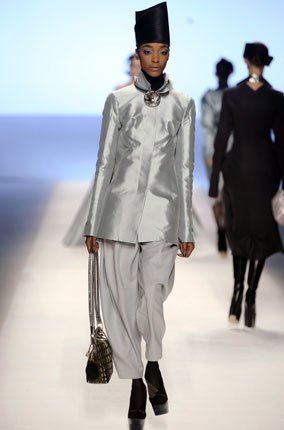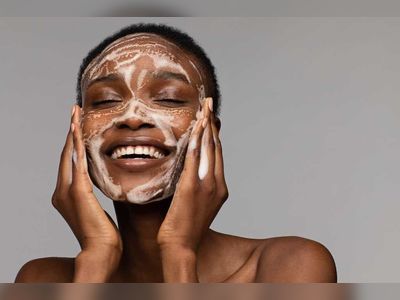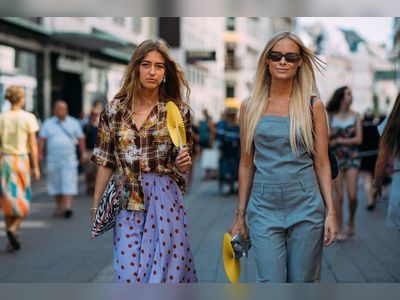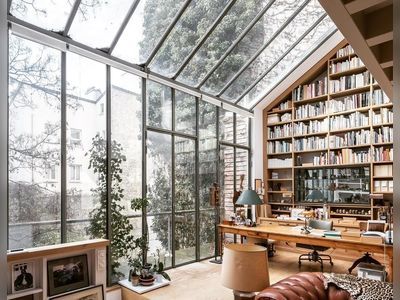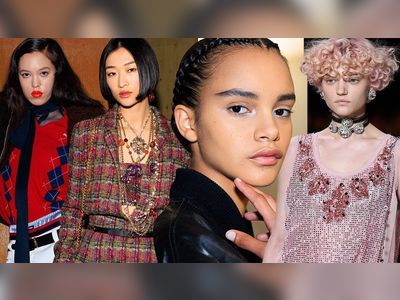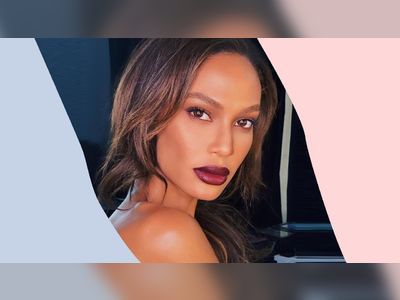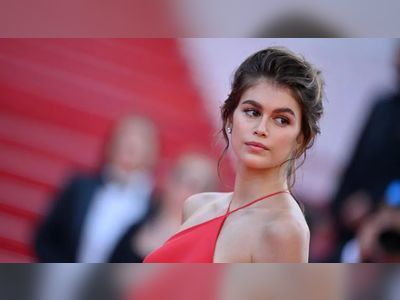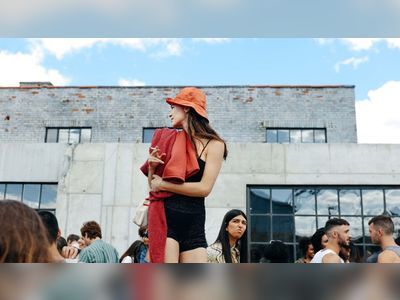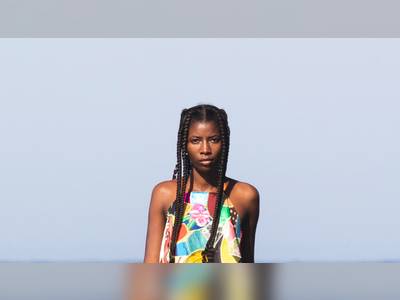PARIS: Is the future shackled to the past? Or can fashion move forward without any reference to previous styles or eras?
That is the fundamental question as four weeks of international collections closed with three powerful shows. Louis Vuitton sculpted a new silhouette, topped with a stylized hat, that emphasized a general smartening up - but also hinted at the bold fashion architecture of the 1980s.
Lanvin's play on horizontal and vertical ribbons addressed familiar subjects of femininity and flesh in fashion but made the clothes seem both practical and desirable. While at Miu Miu, Miuccia Prada exploded future shock by projecting sports clothes with openwork net into a new universe.
"I wanted it to look done," said Marc Jacobs, referring to the hyper-finished makeup and the details in his Louis Vuitton collection, where the new silhouette was of bulbous harem pants and architectural over-the-knee skirts. The silhouette projected an image of the Milanese power woman circa 1988, while the dawn blue and pink colors and the head-to-toe finesse echoed the perfection of Claude Montana in his heyday.
Even if Jacobs draws from existing ideas, he makes them right for now. And this show captured the sportswear solidity of his eponymous New York collection with a little more risk. Pairing a long, curvy jacket with the pantaloons, creating a whorl of fabric at the thigh or molding the hips as if in putty, made the silhouette seem fresh.
The bold jewels - more striking than classic bags with LV woven into the carpet surface - included silver half circles at the ears and even hoops at the hips. Like the fez-style conical hats and sculpted headpieces, they were graphic. In this company, accessories are never going to be downplayed, but this was a collection of substantial clothes that brought fashion itself back into the limelight.
"Ribbons, threads and connections," said Alber Elbaz of Lanvin, whose dresses were constructed from grosgrain ribbon or tapes of fabric. They created an effect of horizontal or vertical pleats that sometimes offered a sliver of flesh between the lines of a dark dress. The ribbons also gave a sense of geometry without screaming "1980s architecture."
The result was a fine, strong show that was both user-friendly and imaginative in its construction - two factors that have become symbols of the Lanvin renaissance under Elbaz. Examples of woman power were a one-shoulder dress with asymmetric slanted ribbons melded with horizontal lines; and a top made out of a giant bow and worn with slender pants.
The Lanvin show was based on dresses and on somber colors - mostly black but also navy and brown, highlighted with bold jewelry and by streams of silver. Metallic edging on the ribbons constructed an exceptional evening dress.
Elbaz does not project fashion into the future but nor does he reference the past. He makes clothes seem desirable for the here and now, with the deceptive simplicity that marks a powerful talent.
Prada had the definition for her collection of clothes in futuristic materials and bold jockey colors in her Miu Miu show.
"Sportswear - but taking it in a new direction," said the designer after showing oversize sweat tops and mesh layers in racing colors like grass green, orange, teal, tomato red and burgundy. Like a sporty version of the lace in Prada's Milan show, the openwork, techno mesh was revealing. But in this case there was no sly sexuality, but instead more fitted clothes underneath, including stretch cycling shorts and patterned pieces.
The clothes were made the more weird by being shown on models with helmet headgear and pony tails whisking from the crown. They so obliterated the personality that the initials of the models were embroidered at the shoulder, like a hostess identification.
This Miu Miu show was a 180-degree turn from the froufrou French maids of last season. With eerie futuristic music, the clothes could not be defined by a reference on fashion's memory card. But that is Prada's way. Least challenging were the accessories: covetable boots and bags in atonal plays on color. Asked whether she would be choosing this futuristic sportswear, a front-row guest, the actress Mischa Barton, replied: "Hmm. I'll have to think about it."
Contrasted to all this "fashion" with a capital "F," the Chado Ralph Rucci show closed the collections exuding calm. But this was tranquillity with an undercurrent, as found in pulsating waves. Rucci said in his program notes that he had studied quantum mechanics and although his graceful clothes seem more art than science, undulating seaming ran through the collection. It was used to beautiful effect to shape a dress at the midriff or to add interest to the surface of a long coat.
With tailoring creating rounded shapes, like a cape jacket above a slim skirt, Rucci also reworked some of his fine couture effects, both in cut and in sunray details and in the subtle way he uses the finest fur trimmings. The quality of his work begs this question: Why did Rucci not continue to show during the Paris couture season to which his spirit seems to belong?
